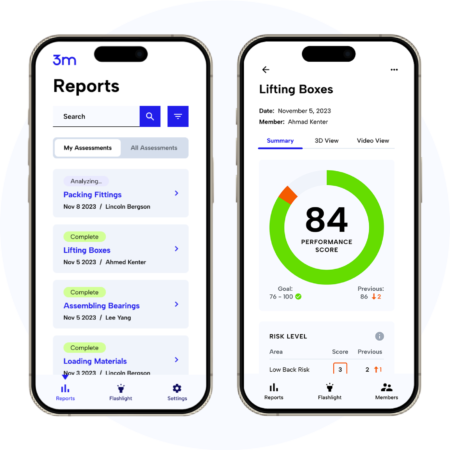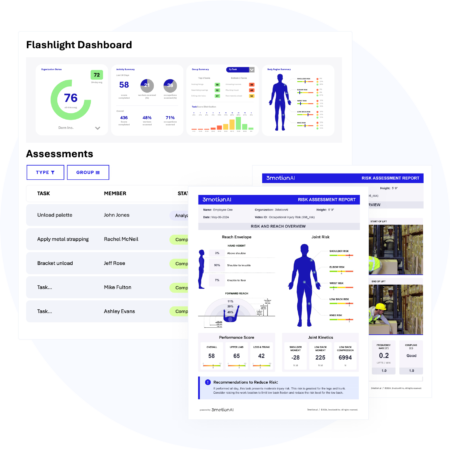
Glass Canada: Gearing Up – AI Safety on the Site
Love it or hate it, artificial intelligence (AI) has become a useful tool that is making its way across almost every boardroom, office and workspace. On the surface the construction industry may not appear to use much AI – if at all. But to those who do work manual and physical labour, AI may be more helpful than you’d expect. 3motion AI is real-time capture tool that uses AI to predict performance and offer safety interventions.
Reed Hanoun the founder and CEO of 3motion AI shares his insights on why AI and 3motion AI is beneficial the manufacturing and construction industry.
How does the technology behind 3motion AI work?
In the simplest, most common use case, 3motion allows any employer to use their cell phones, to identify where risk may be within the workplace, either at the employee level or at the job task itself. With a downloadable mobile app an employee can down use what we call a ‘flashlight’ scan the person preforming a specific task and the AI technology will evaluate the function at hand for risk – calculating the amount of risk on the body and suggest changes. 3motion also highlights where an injury may potentially happen – with the goal in mind the user will be able to intervene and help the employee perform their job a bit more safely.

Why do you think a product like this beneficial for someone in the construction or glass industry?
Well, it is really understanding the exposure of a job and what risks an employee can face. Whether it’s glass, manufacturing or construction – the jobs themselves generally are very consistent. If you have to lift the box from point A to point B, that’s part of the job. What changes is the actual individual themselves. An employee’s ability to perform that job depends on age, fitness, height and physical condition. So, the job is the same, but the people are different. There is a different set of exposure on one employee compared to another. In most work environments, especially in manufacturing and blue-collar, they’ve adjusted ergonomics to be as good as possible. But now the attention needs to be focused on making sure that the employees are performing their jobs safely. With this AI tool, one can customize and modify the feedback to that specific employee based on who they are.

Has this AI tool had success in the manufacturing industry so far?
Yes. It has been used by in blue collar across the board in many industries – construction is definitely one of them, alongside the manufacturing industry. We’ve seen a lot of success on a lot of different levels in manufacturing. What we do (3Motion) is introduce the concept of a dynamic risk assessment using our technology where you can scan employees periodically, once a month, once every two months, once every quarter and look at how dynamic risk is changing. So, an employee can parenthetically intervene which is a much more of a proactive approach to workplace safety. By looking at risk dynamically, we can then intervene and we solve risks and injuries from happening in the workplace much, much earlier. In the process. Very few players, we look at risk from a dynamic perspective, they look at it, we have a job, we have individual, we have an employee doing it, they assume everybody’s the same. Looking at it the way we’re doing it in terms of re scanning and re scanning every employee periodically, you get a much better view of risk exposure over time, on a very granular level.

